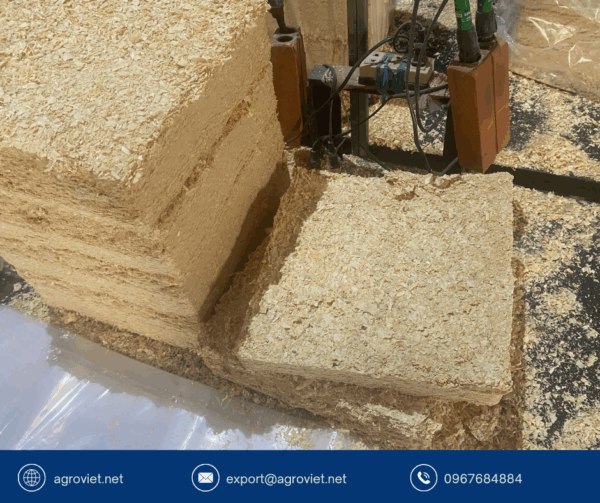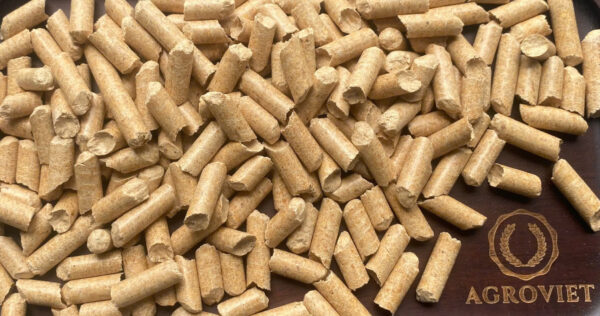Wood Shavings vs. Wood Pellets – Pros, Cons, and Why They’re Top Choices
Selecting the best bedding for your chicken coop is a vital decision that impacts the health, comfort, and productivity of your flock. Chicken bedding, often referred to as floor litter, absorbs moisture, controls odors, and supports natural behaviors like dust-bathing and scratching. Among the many options available, wood shavings and wood pellets consistently stand out as superior choices due to their absorbency, affordability, and ease of use. In this detailed guide, inspired by insights from Adenbrook’s comparison of bedding materials, we’ll explore the pros and cons of wood shavings and wood pellets for chicken coops, ultimately concluding why these two remain the best bedding options for Australian poultry keepers seeking quality at an affordable price.

Understanding the Role of Chicken Bedding
Chicken bedding serves a unique purpose compared to bedding for other animals. Since chickens typically roost overnight rather than sleep on the floor, bedding acts primarily as floor litter, absorbing droppings, spilled water, and other moisture to maintain a dry, hygienic environment. The best bedding minimizes odors, reduces the risk of diseases like coccidiosis, and provides a comfortable surface for chickens to engage in natural behaviors. Key qualities to look for include high absorbency, low dust, non-toxicity, and ease of cleaning. Wood shavings and wood pellets excel in these areas, making them ideal for coops across Australia’s varied climates, from humid coastal regions to dry inland areas.
Wood Shavings: A Traditional, Reliable Choice
Wood shavings, typically sourced from softwoods like pine or kiln-dried timber, are a classic choice for chicken coop bedding due to their excellent absorbency and natural properties. They effectively soak up moisture from droppings and water, keeping the coop floor dry and reducing odor buildup. Their soft, cushioned texture offers comfort for chickens during dust-bathing and foraging, while their low-dust composition supports respiratory health for both birds and keepers. Wood shavings are also easy to manage, allowing for spot-cleaning of soiled areas without needing to replace the entire bedding layer.
Pros of Wood Shavings
-
High Absorbency: Wood shavings efficiently absorb moisture, maintaining a dry coop and reducing the risk of bacterial growth.
-
Comfortable Texture: Their soft, fluffy structure provides a cozy surface for chickens to engage in natural behaviors.
-
Widely Available: In Australia, wood shavings are readily accessible from farm stores, sawmills, or local suppliers, often at a low cost.
-
Easy to Spot-Clean: Soiled patches can be removed quickly, extending the life of the bedding.
-
Compostable: Used shavings break down into nutrient-rich compost, benefiting your garden.
Cons of Wood Shavings
-
Dust Variability: Lower-quality shavings can be dusty, potentially irritating chickens’ respiratory systems. Opting for dust-screened or kiln-dried products mitigates this issue.
-
Frequent Replacement: In high-traffic coops, shavings may need more frequent topping up compared to pellets.
-
Storage Space: Shavings are bulkier than pellets, requiring more storage room.
Despite these drawbacks, wood shavings remain a cost-effective and practical choice, especially for larger coops where their affordability and availability shine. Their natural scent, often described as fresh and pleasant, adds to the coop’s ambiance, making them a favorite among backyard poultry keepers.
Wood Pellets: A Modern, High-Efficiency Option
Wood pellets, originally developed for heating, have gained traction as an innovative chicken bedding material. Made from compressed sawdust, these pellets expand when exposed to moisture, transforming into a soft, absorbent layer that locks in odors and droppings. Their high absorbency makes them one of the best bedding options for coops in humid or rainy climates, where moisture control is critical. Wood pellets are also low in dust, easy to store, and highly efficient, requiring less material than traditional beddings.
Pros of Wood Pellets
-
Superior Absorbency: A single 40-lb bag of pellets can absorb up to 11 gallons of liquid, reducing the need for frequent changes.
-
Low Dust: Compressed pellets produce minimal dust, promoting healthier air quality for chickens.
-
Compact Storage: Pellets take up significantly less space than shavings, ideal for urban coops or small properties.
-
Easy Cleaning: Soiled pellets clump when wet, making it simple to scoop out waste without disturbing the entire bedding layer.
-
Eco-Friendly: Pellets are biodegradable and compostable, breaking down into a fine material that enriches garden soil.
Cons of Wood Pellets
-
Initial Cost: Pellets can be slightly more expensive upfront than shavings, though their efficiency offsets this over time.
-
Activation Time: Some keepers find that pellets require a light misting to expand initially, adding a minor step to setup.
-
Not Ideal for Nesting Boxes: Their harder texture before expansion makes them less suitable for egg-laying areas compared to shavings.
While wood pellets may require a brief learning curve, their benefits—particularly in moisture control and low maintenance—make them a top choice for modern poultry keepers. Their compact nature also appeals to those with limited storage space, a common concern in urban settings.
Comparing Wood Shavings and Wood Pellets
Both wood shavings and wood pellets offer unique advantages, making them the best bedding options depending on your coop’s needs. Wood shavings are ideal for keepers who value a soft, traditional bedding that’s affordable and easy to manage. They’re well-suited for larger coops where spot-cleaning is routine, and their availability across Australia ensures consistent supply. Wood pellets, conversely, are perfect for smaller coops or those in wetter climates, thanks to their exceptional absorbency and compact storage. Their clumping action simplifies cleaning, saving time and labor.
In terms of cost, wood shavings are typically cheaper per bag, but pellets’ efficiency means less frequent replacement, balancing expenses over time. Both materials are low-dust when sourced from reputable suppliers, ensuring respiratory health for your flock. Additionally, their compostable nature aligns with sustainable poultry-keeping practices, allowing used bedding to enrich your garden. For some keepers, combining the two—using pellets as a base layer for absorbency and shavings as a top layer for comfort—offers the best of both worlds.
Other Bedding Options: Why Wood-Based Materials Excel
While wood shavings and wood pellets dominate, other bedding materials like straw, sand, and paper are sometimes considered. However, these alternatives often fall short. Straw, for example, is less absorbent and prone to matting, creating a damp environment that fosters bacteria. Sand is heavy, non-compostable, and can retain heat, making it unsuitable for Australia’s warmer regions. Paper-based beddings, such as shredded newspaper, absorb moisture but break down quickly, requiring frequent replacement. In contrast, wood shavings and wood pellets offer superior absorbency, durability, and affordability, making them the best bedding choices for most coops.
Practical Tips for Using Wood Shavings and Wood Pellets
To maximize the benefits of these best bedding materials, follow these management tips:
-
Layer Thickness: Spread a 5-10 cm layer of shavings or pellets evenly across the coop floor for adequate moisture absorption. For pellets, a light misting can help them expand initially.
-
Regular Maintenance: Stir the bedding weekly with a rake to prevent matting and promote drying. Spot-clean daily by removing soiled areas, extending the bedding’s lifespan.
-
Nesting Boxes: Use wood shavings in nesting boxes for a soft, cozy surface that encourages egg-laying. Avoid pellets here due to their initial hardness.
-
Quality Matters: Choose untreated, kiln-dried shavings or pellets to ensure they’re free from chemicals or oils. Avoid cedar shavings, as their fumes can be toxic to chickens.
-
Storage: Store pellets in a dry, covered area to prevent moisture damage. Shavings can be stored in a barn or shed, though they require more space.
By maintaining a consistent cleaning routine, wood shavings and wood pellets will keep your coop fresh, dry, and odor-free, ensuring a healthy environment for your flock.
Health and Environmental Benefits
The best bedding prioritizes your flock’s health and the environment. Wood shavings and wood pellets are low in dust, reducing the risk of respiratory issues that can arise from materials like sand or straw. Their natural composition minimizes parasitic infections and foot injuries, keeping chickens active and healthy. Both materials are biodegradable, breaking down into compost that enriches soil, making them sustainable choices for eco-conscious keepers. By choosing high-quality, sustainably sourced products, you contribute to a greener backyard while supporting your flock’s well-being.
Why Wood Shavings and Wood Pellets Are the Best Bedding
After weighing the pros and cons, wood shavings and wood pellets emerge as the best bedding options for chicken coops due to their affordability, performance, and versatility. Wood shavings offer a soft, cost-effective solution that’s widely available and easy to manage, making them ideal for larger setups or budget-conscious keepers. Wood pellets, with their superior absorbency and compact storage, cater to smaller coops or those in humid climates, providing low-maintenance efficiency. Both materials deliver on absorbency, low dust, and sustainability, outperforming alternatives like straw or sand.
Their affordability is a key factor. While pellets may have a slightly higher upfront cost, their longevity reduces overall expenses, and shavings’ low price per bag ensures accessibility for all keepers. By combining these materials or tailoring their use to your coop’s needs, you can create a clean, comfortable environment that supports a thriving flock. Whether you’re a novice or seasoned poultry keeper, wood shavings and wood pellets offer unbeatable value, making them the go-to choices for the best bedding in Australia.
Conclusion
Choosing the best bedding for your chicken coop is an investment in your flock’s health and your peace of mind. Wood shavings and wood pellets stand out as the top options, blending affordability, absorbency, and eco-friendly properties. Their ability to maintain a dry, odor-free coop while supporting natural chicken behaviors makes them indispensable for poultry keepers. Explore local suppliers for high-quality, untreated wood shavings or pellets, and transform your coop into a hygienic, sustainable haven for your feathered friends. With these materials, you’re not just bedding a coop—you’re building a foundation for happy, healthy chickens.
